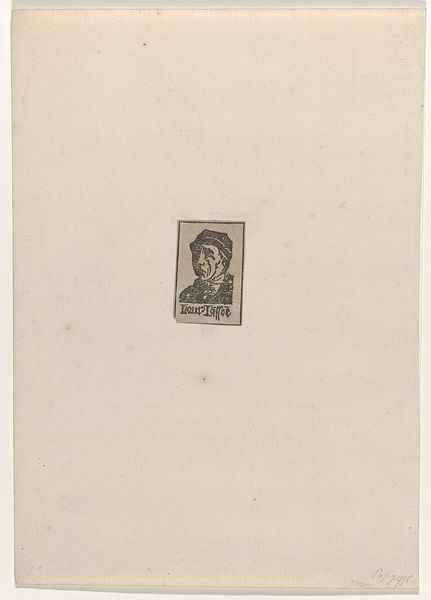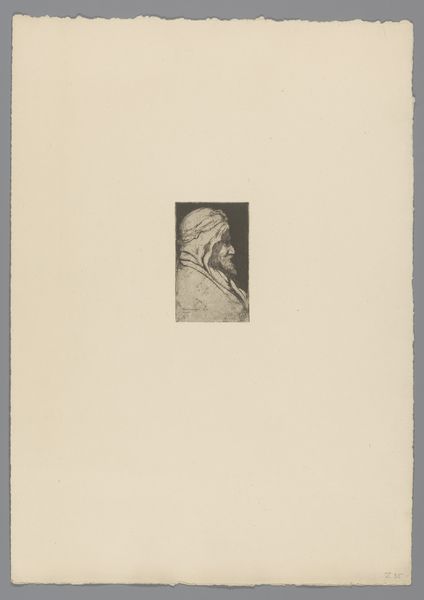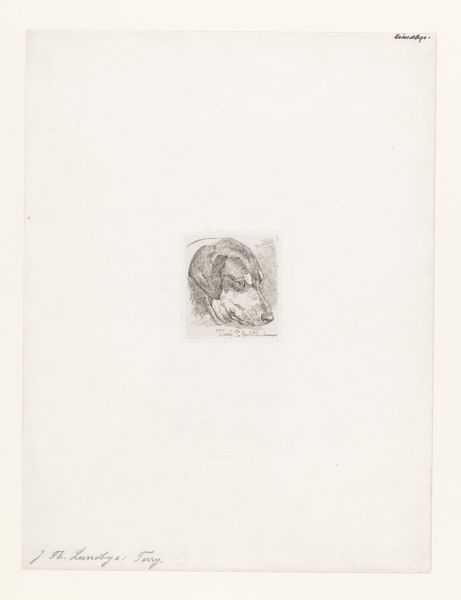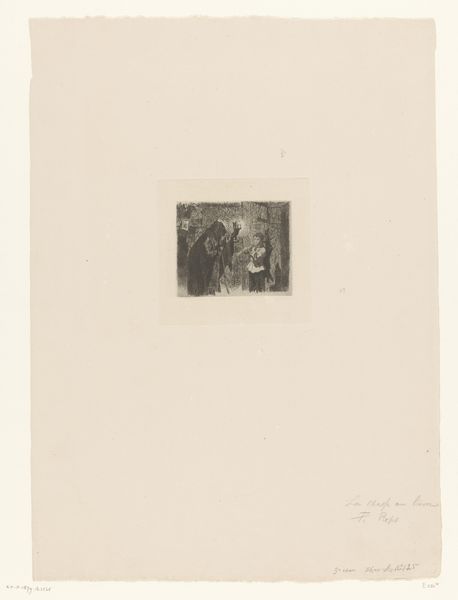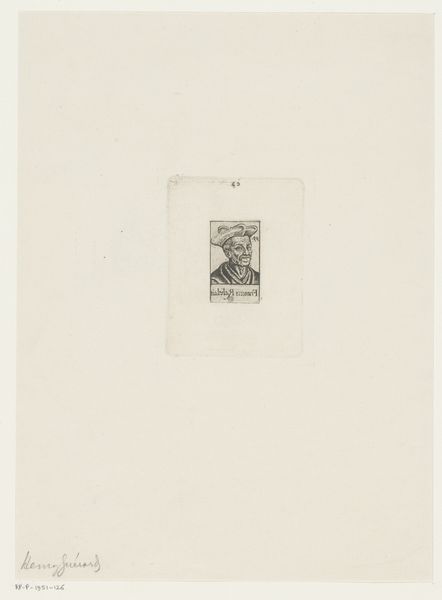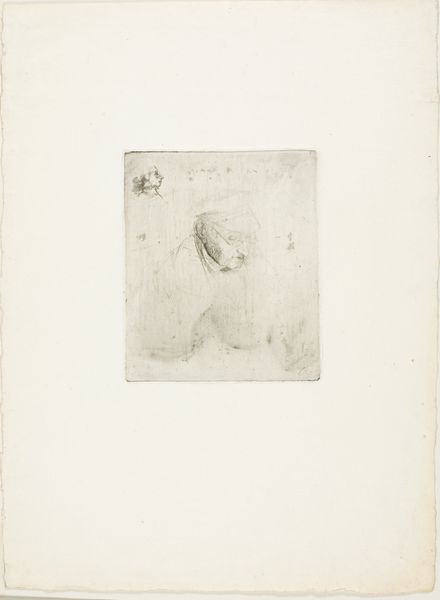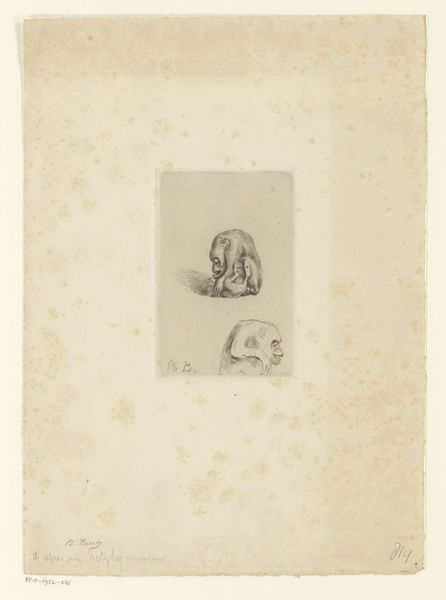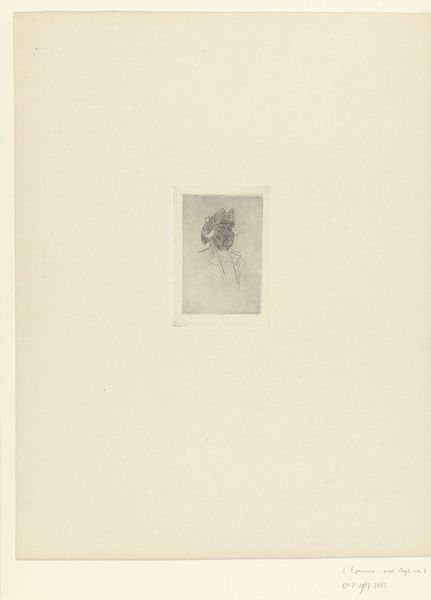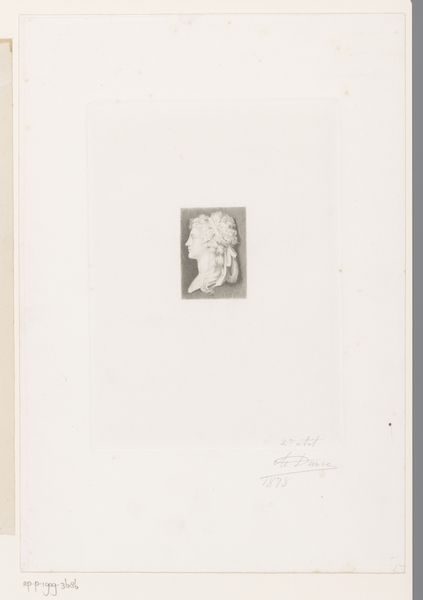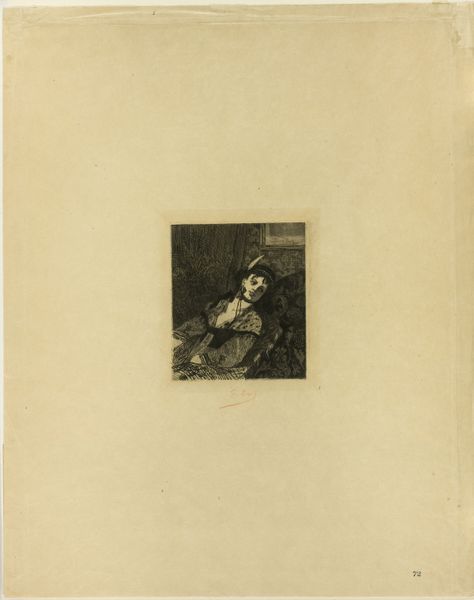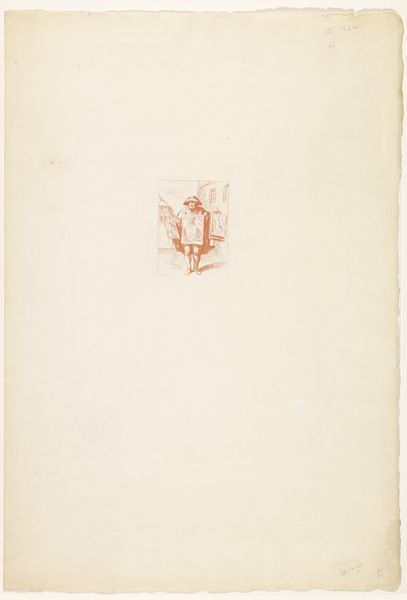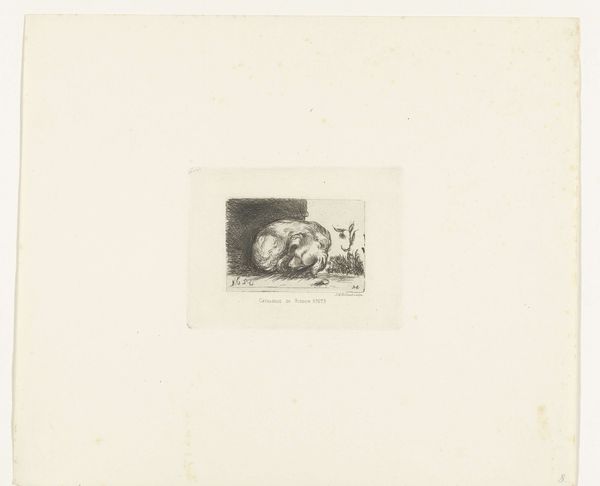
drawing, print, etching, paper
#
portrait
#
drawing
# print
#
etching
#
figuration
#
paper
Dimensions: 45 × 43 mm (image/plate); 315 × 225 mm (sheet)
Copyright: Public Domain
Curator: Here we have Felicien Rops' "Flemish Market-Gardener," a compelling portrait rendered in etching on paper. What strikes you first? Editor: There's an undeniable air of weariness, a deep fatigue etched onto this gardener's face. It's all accentuated by the miniature scale and massive empty space. I can feel the weight of daily struggles conveyed in those etched lines. Curator: I agree, the lines themselves create a fascinating visual tension. Notice how the dense cross-hatching around the figure contrasts with the relative simplicity of the hat. Rops’ masterful application of hatching and cross-hatching, creates both form and mood in this study. Editor: The hat, especially, speaks volumes about the individual’s social standing and position within the working classes. Given Rops' focus on social issues, I am immediately wondering, what is the larger cultural narrative in the representation of laborers at the fin-de-siècle? Curator: Well, within the formal composition, the figure is undeniably centered, commanding the small picture plane. It’s as though Rops asks us to look at and consider every deliberate detail included. Editor: Absolutely, but it must be contextualized. How does this seemingly straightforward image engage with representations of gender, class, and labor at the time it was created? To what extent is this particular portrait contributing to stereotypes about the working class, or is it challenging those ideas? Curator: The subtle gradations of tone achieved through the etching technique add another layer to our reading of this image. From the darkest shadows to the palest highlights, Rops coaxes incredible depth with purely linear means. Editor: Yes, I concede there is aesthetic precision in the artist’s choices. Ultimately, however, the aesthetic cannot be divorced from the complex issues facing those who occupied a similar space within the margins of nineteenth century Europe. It would seem there is more than meets the eye. Curator: Indeed. Perhaps it's through that dialogue between form and context that we truly begin to understand the art. Editor: I appreciate the opportunity to engage with Rops' artistry; there's power when form meets historical conscience.
Comments
No comments
Be the first to comment and join the conversation on the ultimate creative platform.
